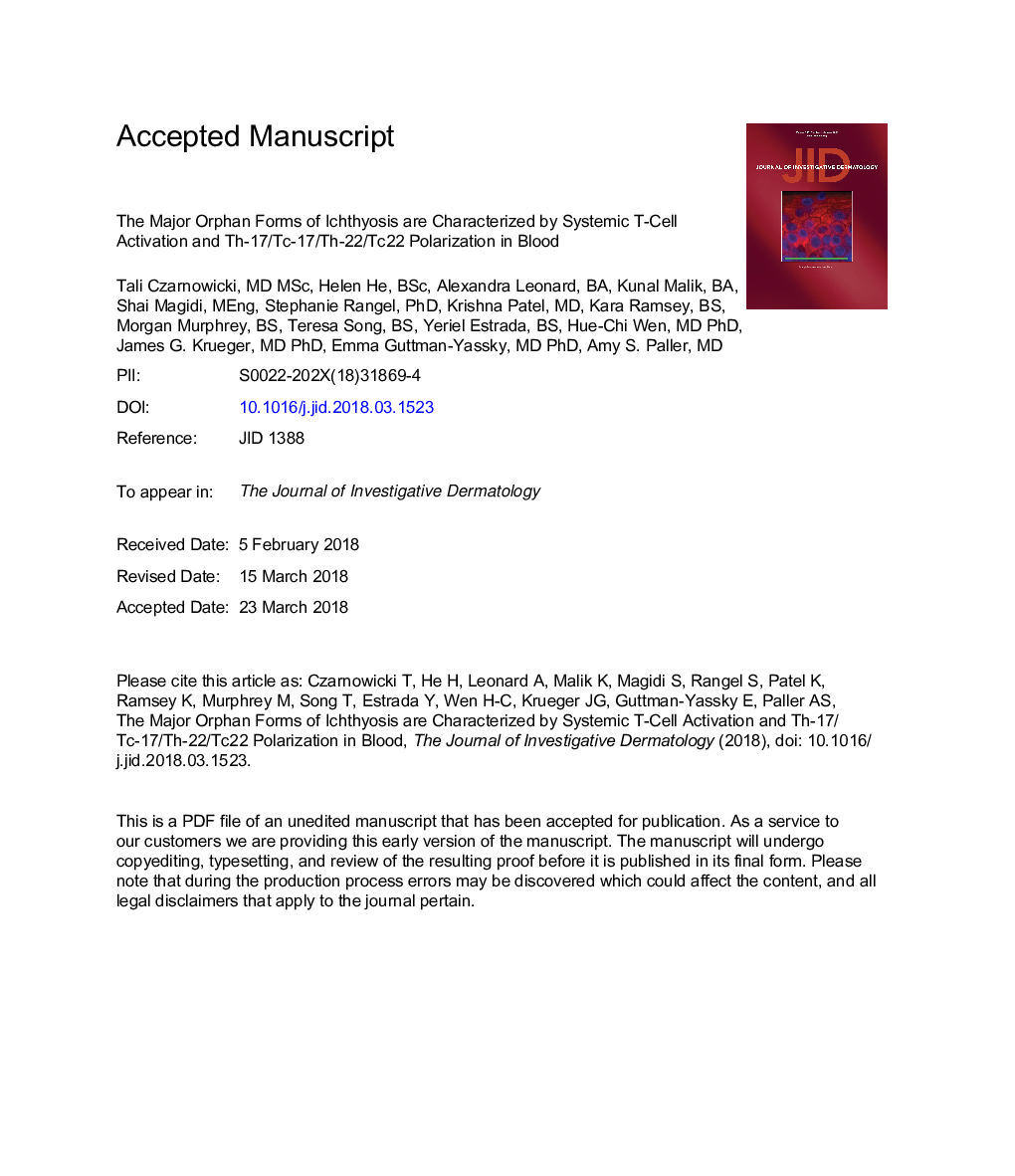| Article ID | Journal | Published Year | Pages | File Type |
|---|---|---|---|---|
| 10216992 | Journal of Investigative Dermatology | 2018 | 40 Pages |
Abstract
The ichthyoses are rare skin disorders with immune and barrier aberrations. Identifying blood phenotypes may advance targeted therapeutics. We aimed to compare frequencies of skin homing/cutaneous lymphocyte antigen (+) versus systemic/cutaneous lymphocyte antigen (-) “polar” CD4+/CD8+ and activated T-cell subsets in ichthyosis versus atopic dermatitis, psoriasis, and control blood, with appropriate clinical correlations. Flow cytometry was used to measure IFN-γ, IL-13, IL-9, IL-17, and IL-22 cytokines in CD4+/CD8+ T cells, with inducible co-stimulator molecule and HLA-DR defining mid- and long-term T-cell activation, respectively. We compared peripheral blood from 47 patients with ichthyosis (congenital ichthyosiform erythroderma, lamellar ichthyosis, epidermolytic ichthyosis, and Netherton syndrome) with 43 patients with atopic dermatitis and 24 patients with psoriasis and 59 age-matched controls. Clinical measures included the ichthyosis severity score, with subsets for erythema and scaling, transepidermal water loss, and pruritus. All ichthyoses had excessive inducible co-stimulator molecule activation (P < 0.001), particularly epidermolytic ichthyosis. Significantly elevated IL-17- (P < 0.05) and IL-22-producing (P < 0.01) T cells characterized ichthyoses, mainly Netherton syndrome and congenital ichthyosiform erythroderma (P < 0.05). Increased T helper 2/cytotoxic T cell 2/T helper 9 (P < 0.05) and similar IFN-γ frequencies (P > 0.1) versus controls were also noted. IL-17/IL-22-producing cells clustered with clinical measures, whereas IFN-γ clustered with age. Our data show peripheral blood IL-17/IL-22 activation across the ichthyoses, correlating with clinical measures. Targeted therapies should dissect the relative contribution of polar cytokines to disease pathogenesis.
Keywords
effector memory T cellCentral memory T cellT-regulatory cellcongenital ichthyosiform erythrodermaARCIICOST helperTEWLTregIASITCMCLACIElamellar ichthyosisautosomal recessive congenital ichthyosiscutaneous lymphocyte antigenTransepidermal water lossepidermolytic ichthyosisTemAtopic dermatitisCytotoxic T cellNetherton syndrome
Related Topics
Health Sciences
Medicine and Dentistry
Dermatology
Authors
Tali Czarnowicki, Helen He, Alexandra Leonard, Kunal Malik, Shai Magidi, Stephanie Rangel, Krishna Patel, Kara Ramsey, Morgan Murphrey, Teresa Song, Yeriel Estrada, Hue-Chi Wen, James G. Krueger, Emma Guttman-Yassky, Amy S. Paller,
